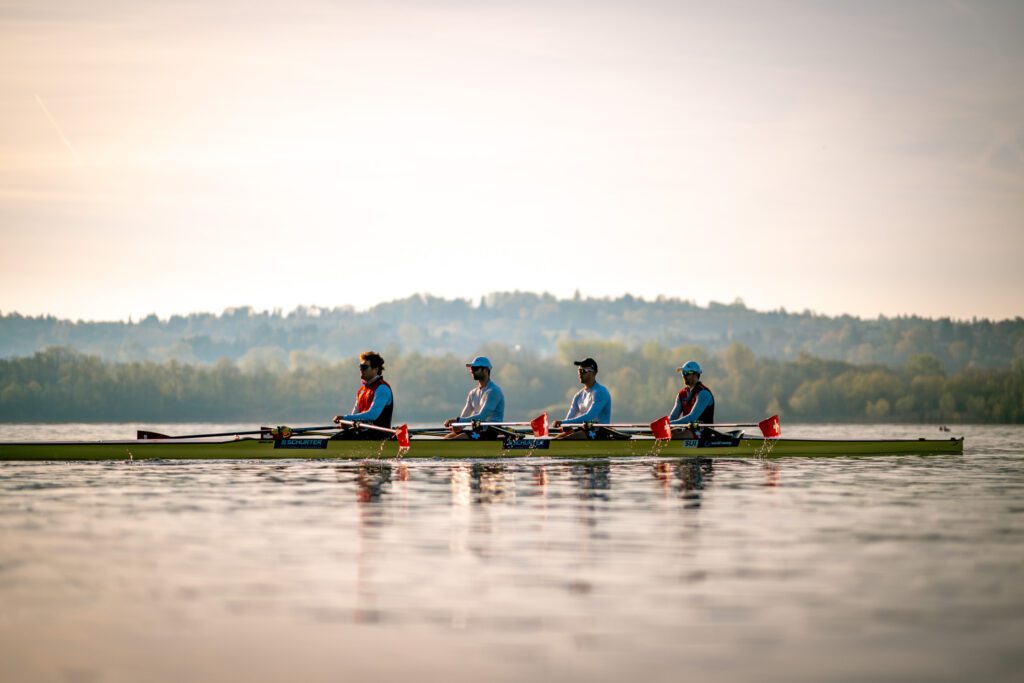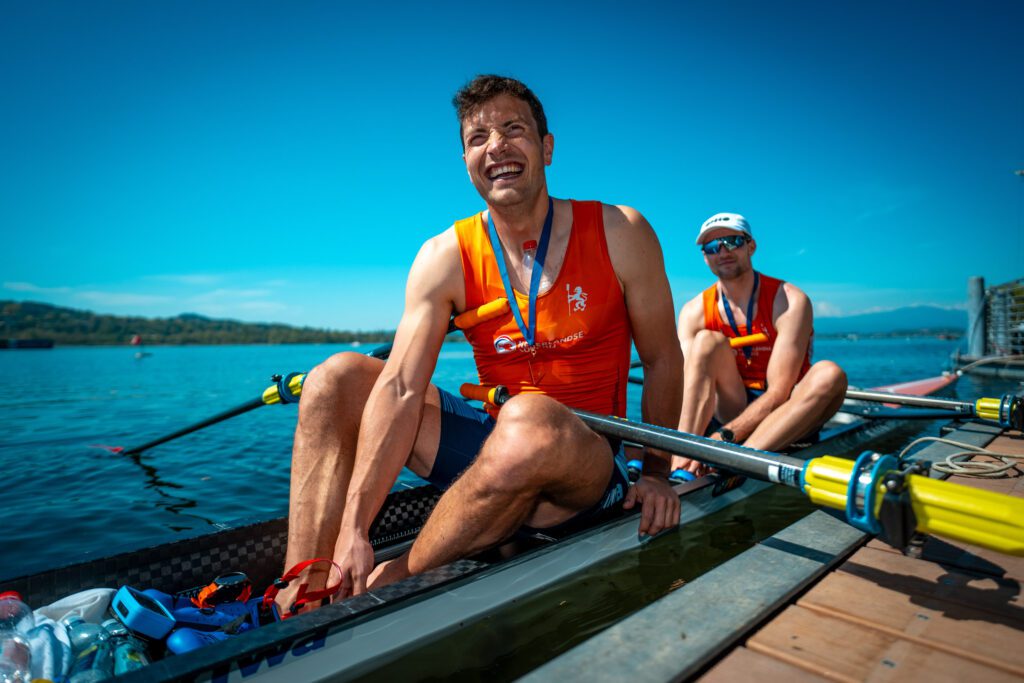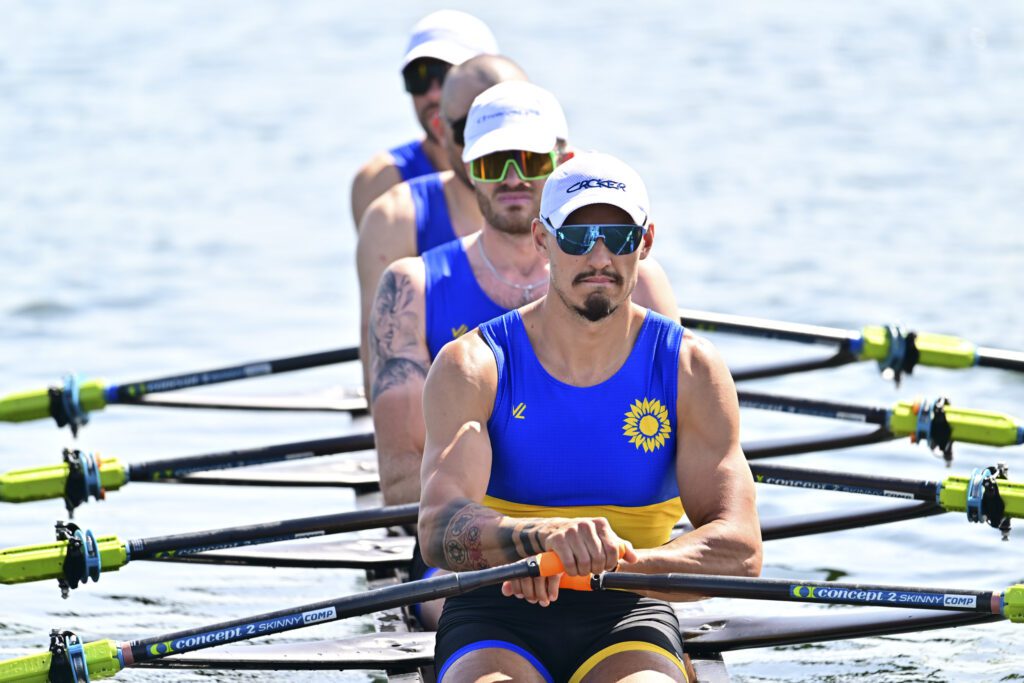Woven around the obvious pandemic-spurred changes, and there are a few, the old place is still its same calm, organised self. Crews crossing through the gaps in the booms, and coming back upriver racing pursued by a majestic launch manned (or womanned just as often nowadays) by knowledgeable drivers, race recorders, and judicious umpires. Ripples of applause from the sun-soaked deckchairs in Stewards, rising to a roar of appreciation as the famous schools go by and alumni relive their increasingly glorious pasts as they watch the next generation. Geese causing trouble on race one, and the measured monotonal official announcements about “Passing the Progress Boards” and “Members are reminded that lunch is served”. Blazers remained firmly on shoulders for men, even though a change in rules led to a handful of women being able to wear smart trousers into Stewards.
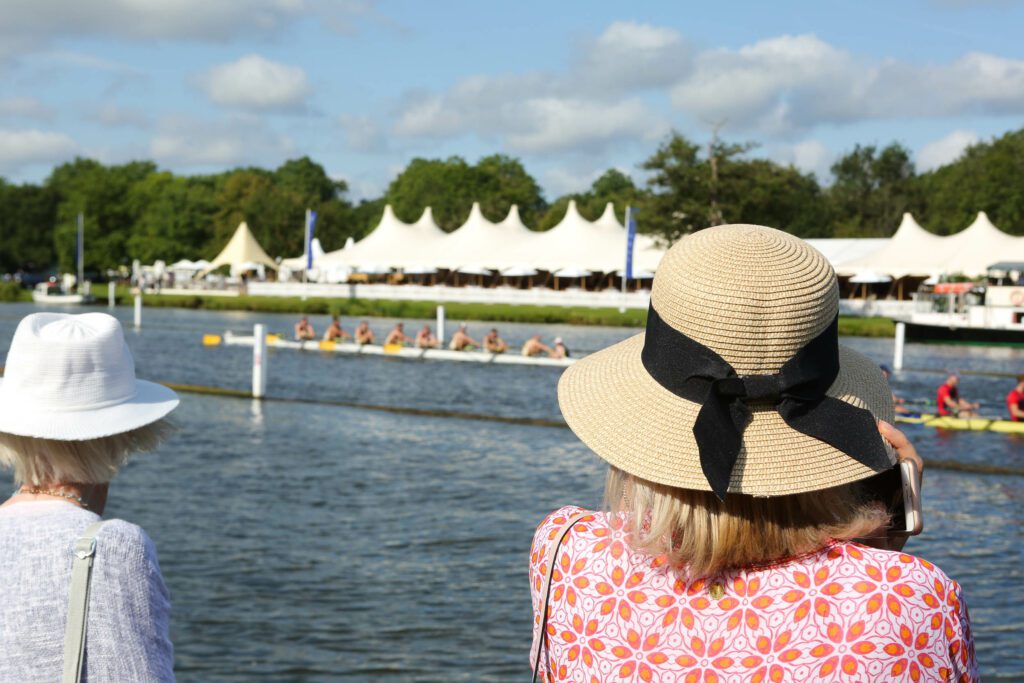
Photo Business as usual at HRR on Wednesday
Credit Ben Rodford
It was glorious. Yes, we miss the boat tents, which have flown across river (along with the ever-chatty staff) to take up temporary residence on the Fawley Meadows bank opposite Upper Thames so that competitors who are lateral-flow testing daily can more easily be kept apart from spectators, with the Regatta Enclosure scrapped. In their place a COVID-friendly Supporters’ Lawn, half car-picnic area, half wooden tables clustered in front of a large screen on which every race is being livestreamed. But the Pimmses are still flowing freely at exorbitant Royal Regatta prices, the trophies are safe in the exhibition area under the grandstand, and all the usual blazers and skirts below the knee are on show. There’s a new formal dance at Henley this year, the Vaccination Gavotte: approach, “are you double-jabbed”, then on hearing “yes” diving in for the first hug of a rowing friend for 18+ months. Heavenly. Thank goodness the Stewards decided to go ahead.
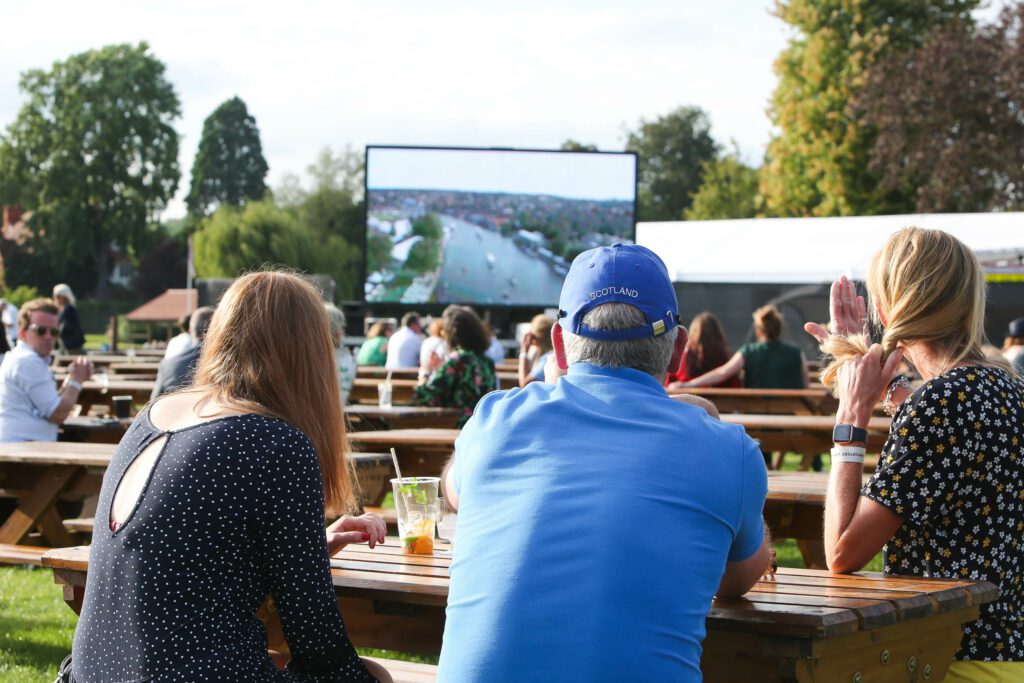
Photo Picnic tables and a big screen replace the traditional boat tents for this year, plus the usual exorbitantly priced Pimms
Credit Ben Rodford
Right, on with the racing. Slightly altered this year, with the usual big eights, quads and fours events beginning on Wednesday, but new excitement in the shape of the Junior Women’s Eights, a big leap for rowing equality and the tip of an iceberg which will see women’s club and student eights also join the party in the next few days. Plus the Diamond Jubilee JW4x has been granted a full slate of 24 racing slots, the same as the Fawley JM4x, another acknowledgement that women’s rowing is every bit as strong as men’s in this country. The junior women’s eights were truly excellent, honours shared for now between Henley who posted the quickest Barrier time in the new event, and Shrewsbury School with an eight made up of their quad and four, who were the first to break eight minutes across the course in mild head-wind conditions.
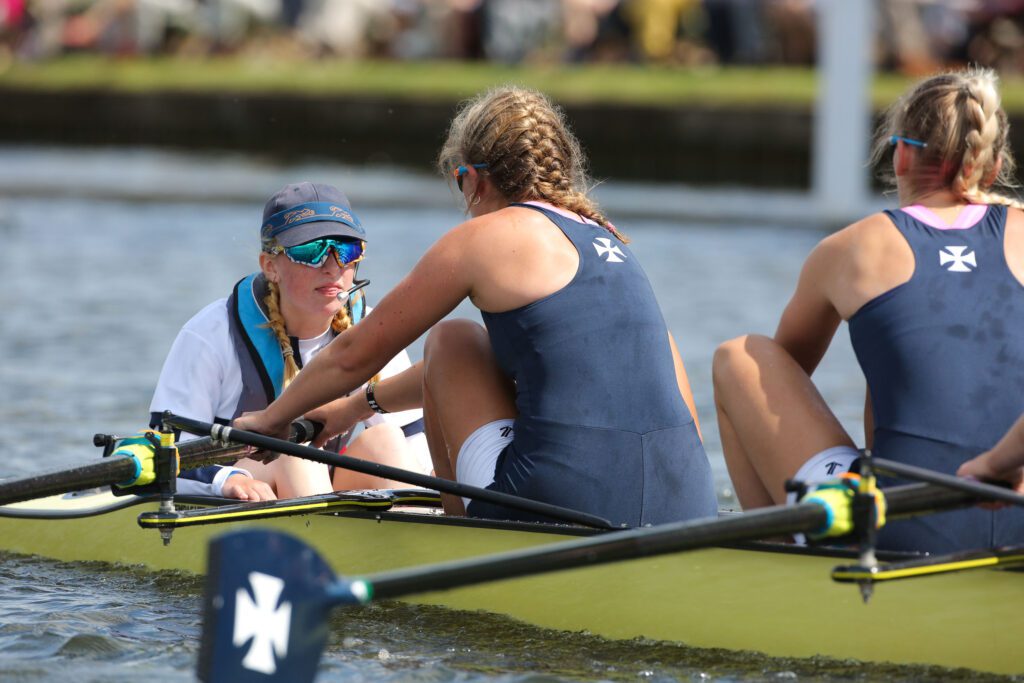
Photo Shrewsbury School with an eight made up of their quad and four were the first to break eight minutes across the course in mild head-wind conditions.
Credit Ben Rodford
The Wyfolds gave its traditional selection box of nutty steering, possibly affected when the wind veered slightly cross, but more likely due to inattention (a common 4- excuse now after the Olympic Games) or lack of practice next to the scary booms. Fortunately none of the steering glitches affected outcomes, though Nottingham ran it close when they aggravated Upper Thames near the finish after rowing them down. The umpire gave it to Nottingham because they would clearly have been even further ahead if they’d steered better, and this was upheld after a formal appeal was mounted on land. Curlew hit the booms briefly in the Enclosures but were already down to Westminster old boys Elizabethan, and Vesta appealed to the umpire on the water following a clash of blades soon after Agecroft had been warned, but that one was turned down too. The course briefly needed mending, when the first boom after the island came loose: spotted by a viewer online and passed on via Twitter.
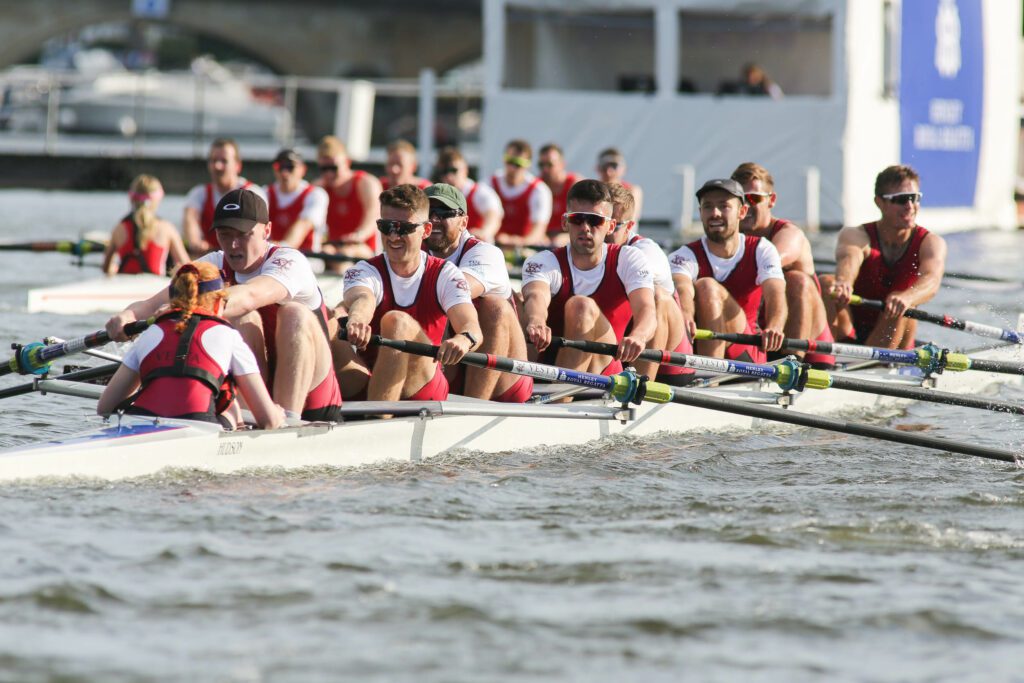
Photo Vesta (pictured) appealed to the umpire on the water following a clash of blades soon after Agecroft had been warned, but were turned down
Credit Ben Rodford
The top selected crews were held out of the eights and quads events, earning byes to later days, but they were all in action in the coxed fours, including University of Bristol who were made to qualify despite winning two medals at the Metropolitan Regatta and all being triallists for the GB development squad. They posted a decent Barrier time while chewing up Exeter, but the speediest-looking were Oxford Brookes A who did a demolition job on the Oxford University lightweights. There was a canvas verdict, the shortest of the day, for George Watson’s College over Hereford Cathedral School in the Fawley JM4x, and a couple of thirds of a length. New Henley launch Boadicea did her turn, carrying the TV cameras for the big races, though not without complaint of slightly wayward steering from the experienced drivers.
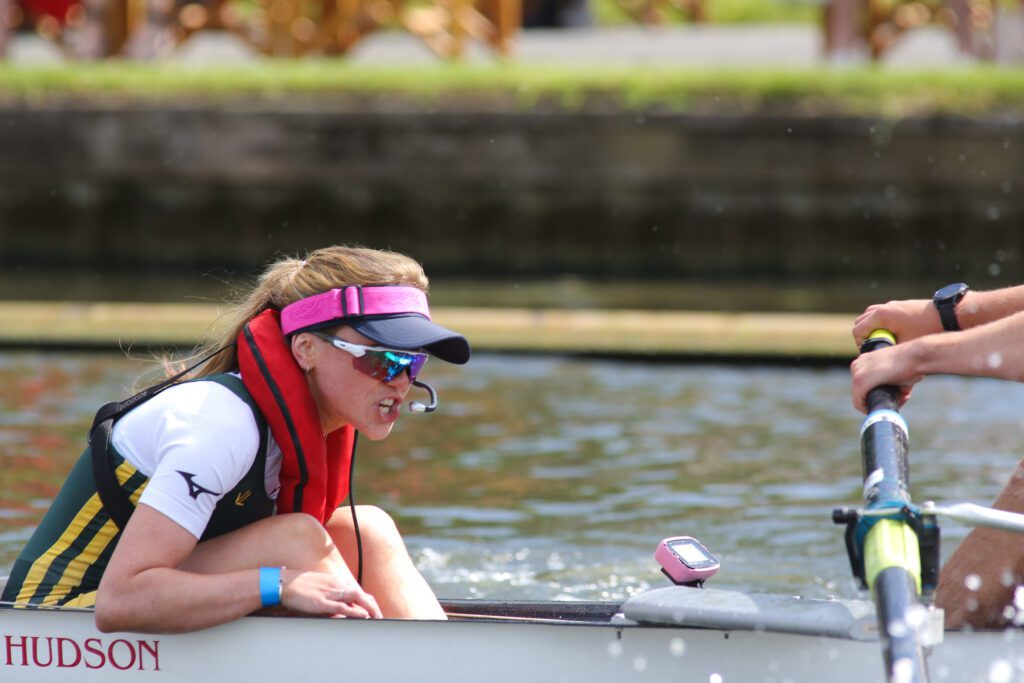
Photo The cox urges on Northwich in a humdinger against Upper Thames on Wednesday
Credit Ben Rodford
There was disappointment for Mossbourne Academy, the London Youth Rowing collaboration project coming to HRR for the first time, and a clutch of old-boy rowing clubs not all of whom are quite fit enough to win nowadays. Athlete weights have been removed from this year onwards, replaced by a not entirely reliable note of how many years a rower or cox has competed at the Royal Regatta before, but there was a humdinger of a race won by Upper Thames over Northwich, the local veteran crew overtaking their rivals’ lead and collapsing panting at the end. Thursday sees the first races in the senior quads and singles join the throng. More please.

